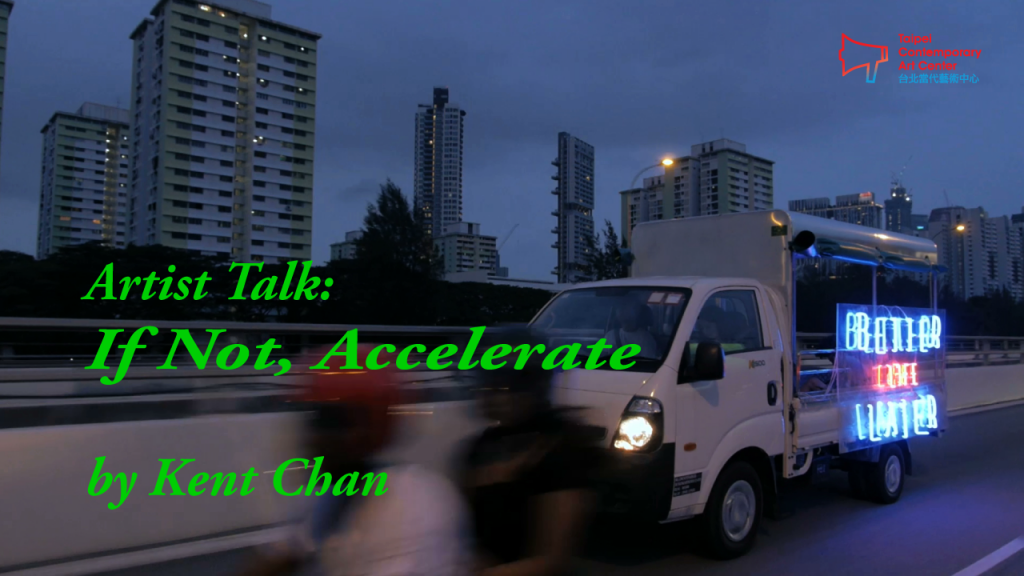For English, please scroll down
時間:2017.02.10 下午7-9點
地點:台北當代藝術中心,台北市保安街49巷11號(捷運大橋頭站)
新加坡藝術家/策展人Kent Chan將在本次座談上首次於台灣介紹他的最新計畫《若非,加速》,企圖從希臘文polis(城市)的矩陣中來探討新加坡的移工問題。
從語源學上來看,同為警察(police),政策(policy)與政體(polity)字源的polis 實為政治之場域,並與其許多糾結同在的問題提提供了考掘新加坡和其大量的外移勞動人口之間的歷史性及當代性之觀念性連繫。新加坡建城為一個貿易港口,移工被帶到這座同時也像是流放監獄的城邦國家,成為建設這座城市的基礎。他們在無盡的建設工作角色以外,作為臨時契約工人的狀態同時定義了土地權力構成之反面狀態。
透過對於移工再現問題化的錄像、寫作、物件等的集結,《若非,加速》呈現了一種解構城市、社會經濟政治、焦慮和路徑。
關於藝術家
Kent Chan是一位藝術家、電影製作人、策展人,常駐在新加坡和阿姆斯特丹。他的創作主要圍繞著我們在生活中與藝術、小說和電影院的際遇,審視夾雜於美學經驗和知識生產中的聯繫,並特別關注動態影像和現代城市之間的關係。他者的工作和實踐的內容常常成為他作品中的重心,以此探討在藝術創作與日常生活中的詭譎之處。
他的作品主要以影像、文字、對話和展覽為主要表現形式。
Time: 2017.02.10 7-9pm
Venue: Taipei Contemporary Art Center, No.11, Lane 49, Baoan Street, Taipei (MRT: Daqiaotou Station)
Join artist/curator Kent Chan for a presentation and reading from his latest project If Not, Accelerate. The project examines the issues of migrant labor in Singapore through the matrix of the polis, the Greek word for city.
The etymological root of the words police, policy and polity, the polis as the de facto site of politics and its many entanglements provides the conceptual linkages to excavate the historic and contemporary links between Singapore and its large migrant labor population. Founded as a trading port, whereupon convicts brought to the city-state – in its dual role as penal colony – had built the very foundations of the city. Beyond their role in the ceaseless construction of the city, their status as indentured workers simultaneously define the obverse to the constituted power of the land.
Through an assemblage of videos, writings and objects that problematize the representation of migrant labour, If Not, Accelerate present an attempt to unravel a city, its socio-economic politics, anxiety and trajectory.
About Artist
Kent Chan is an artist, filmmaker and curator based in Singapore and Amsterdam. His practice revolves around our encounters with art, fiction and cinema that explore the links between aesthetic experience and knowledge production, with particular interest in the relationship between moving images and the modern city. The works and practices of others often form the locus of his works, which examines the ambiguity that lies at the interstices of art (making) and daily life.
His works have taken the form of film, text, conversations and exhibitions.

